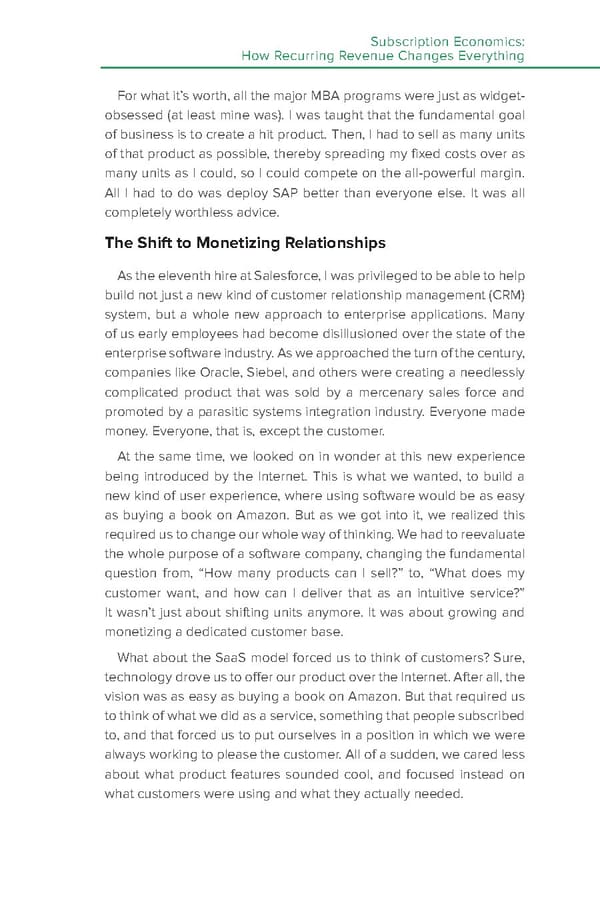Chapter 1 Subscription Economics: How Recurring Revenue Changes Everything For what it’s worth, all the major MBA programs were just as widget- obsessed (at least mine was). I was taught that the fundamental goal of business is to create a hit product. Then, I had to sell as many units of that product as possible, thereby spreading my fixed costs over as many units as I could, so I could compete on the all-powerful margin. All I had to do was deploy SAP better than everyone else. It was all completely worthless advice. The Shift to Monetizing Relationships As the eleventh hire at Salesforce, I was privileged to be able to help build not just a new kind of customer relationship management (CRM) system, but a whole new approach to enterprise applications. Many of us early employees had become disillusioned over the state of the enterprise software industry. As we approached the turn of the century, companies like Oracle, Siebel, and others were creating a needlessly complicated product that was sold by a mercenary sales force and promoted by a parasitic systems integration industry. Everyone made money. Everyone, that is, except the customer. At the same time, we looked on in wonder at this new experience being introduced by the Internet. This is what we wanted, to build a new kind of user experience, where using software would be as easy as buying a book on Amazon. But as we got into it, we realized this required us to change our whole way of thinking. We had to reevaluate the whole purpose of a software company, changing the fundamental question from, “How many products can I sell?” to, “What does my customer want, and how can I deliver that as an intuitive service?” It wasn’t just about shifting units anymore. It was about growing and monetizing a dedicated customer base. What about the SaaS model forced us to think of customers? Sure, technology drove us to offer our product over the Internet. After all, the vision was as easy as buying a book on Amazon. But that required us to think of what we did as a service, something that people subscribed to, and that forced us to put ourselves in a position in which we were always working to please the customer. All of a sudden, we cared less about what product features sounded cool, and focused instead on what customers were using and what they actually needed.
 Subscription Economics Page 4 Page 6
Subscription Economics Page 4 Page 6